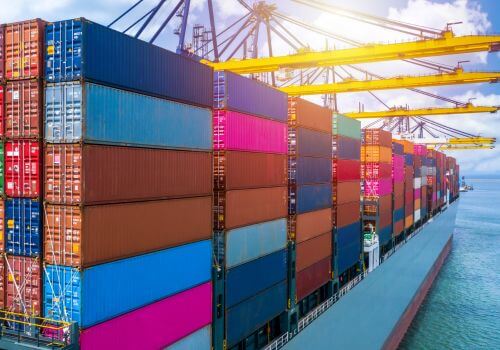Reverse logistics definition
Reverse logistics is the process involved in moving goods from their final destination, typically the customer, back to the manufacturer or distributor. This reverse flow is necessary for handling returns, repairs, remanufacturing, recycling, or disposal. Essentially, it is the opposite of the traditional supply chain, which moves products from the manufacturer to the customer.
Key components of reverse logistics
- Returns management. This involves handling products that customers return for various reasons, including defects, dissatisfaction, or incorrect orders. Returns management is crucial for maintaining customer satisfaction and loyalty.
- Remanufacturing & refurbishing. This process includes repairing and restoring used products to a like-new condition. These products are then resold or reused, reducing waste and saving on the costs of new materials.
- Recycling. Recycling involves disassembling products to recover valuable materials that can be reused in the production of new products. This step is essential for minimizing environmental impact and conserving resources.
- Disposal. Proper disposal of products that cannot be reused or recycled is crucial for adhering to environmental regulations and reducing negative impacts on the environment.
Steps involved in reverse logistics
- The return process begins when the customer sends the product back to the retailer or manufacturer. This step is often facilitated by return policies and customer service support.
- The returned product must be transported from the customer back to a warehouse or processing center. Efficient transportation is key to reducing costs and handling times.
- Once the product arrives at the processing center, it undergoes inspection to determine its condition. Based on the inspection, the production is sorted for repair, refurbishment, recycling, or disposal.
- Products deemed suitable for repair or refurbishment are processed accordingly. This may involve fixing defects, cleaning, and testing to ensure they meet quality standards.
- Repaired or refurbished items are restocked for resale. Products that cannot be repaired are sent for recycling or proper disposal.
Benefits of reverse logistics
- Efficient reverse logistics can significantly reduce costs associated with waste disposal and the procurement of new raw materials. Reusing parts and materials saves money and reduces the need for new resources.
- A streamlined and hassle-free return process enhances customer satisfaction and loyalty. Customers are more likely to return to businesses that handle returns efficiently.
- Recycling and proper disposal of products help reduce environmental impact. By supporting sustainability initiatives, companies can improve their public image and comply with environmental regulations.
- Proper management of returns, recycling, and disposal ensures compliance with local, national, and international regulations. This compliance can prevent legal issues and potential fines.
Real-life examples of reverse logistics
- Retail returns. Retailers like Amazon and Walmart have extensive return policies allowing customers to return clothing, electronics, and other items. These returns are processed, restocked, or sent back to manufacturers.
- Electronics recycling programs. Companies like Apple and Dell offer recyling programs where customers can return old devices. These devices are then either refurbished for sale or recycled to recover valuable materials.
- Automotive industry. Car manufacturers often refurbish and resell parts like engines and transmissions. This practice reduces waste and saves on the costs associated with manufacturing new parts.
In summary, reverse logistics is about handling product returns and disposal efficiently to improve customer satisfaction, save money, and support the environment, making it important for businesses to optimize this process for success.






